Intel® Data Plane Development Kit (Intel® DPDK)
Revision History
Contents
Figures
Legal Lines and Disclaimers
1.0 Introduction
1.1 Documentation Roadmap
1.2 Related Publications
Part 1: Architecture Overview
2.0 Overview
2.1 Development Environment
2.2 Environment Abstraction Layer
2.3 Core Components
2.3.1 Memory Manager (librte_malloc)
2.3.2 Ring Manager (librte_ring)
2.3.3 Memory Pool Manager (librte_mempool)
2.3.4 Network Packet Buffer Management (librte_mbuf)
2.3.5 Timer Manager (librte_timer)
2.4 Ethernet* Poll Mode Driver Architecture
2.5 Packet Forwarding Algorithm Support
2.6 librte_net
3.0 Environment Abstraction Layer
3.1 EAL in a Linux-userland Execution Environment
3.1.1 Initialization and Core Launching
3.1.2 Multi-process Support
3.1.3 Memory Mapping Discovery and Memory Reservation
3.1.4 PCI Access
3.1.5 Per-lcore and Shared Variables
3.1.6 Logs
3.1.6.1 Trace and Debug Functions
3.1.7 CPU Feature Identification
3.1.8 User Space Interrupt and Alarm Handling
3.1.9 Blacklisting
3.1.10 Misc Functions
3.2 Memory Segments and Memory Zones (memzone)
4.0 Malloc Library
4.1 Cookies
4.2 Alignment and NUMA Constraints
4.3 Use Cases
4.4 Internal Implementation
4.4.1 Data Structures
4.4.1.1 Structure: malloc_heap
4.4.1.2 Structure: malloc_elem
4.4.2 Memory Allocation
4.4.3 Freeing Memory
5.0 Ring Library
5.1 References for Ring Implementation in FreeBSD*
5.2 Lockless Ring Buffer in Linux*
5.3 Additional Features
5.3.1 Name
5.3.2 Water Marking
5.3.3 Debug
5.4 Use Cases
5.5 Anatomy of a Ring Buffer
5.5.1 Single Producer Enqueue
5.5.1.1 Enqueue First Step
5.5.1.2 Enqueue Second Step
5.5.1.3 Enqueue Last Step
5.5.2 Single Consumer Dequeue
5.5.2.1 Dequeue First Step
5.5.2.2 Dequeue Second Step
5.5.2.3 Dequeue Last Step
5.5.3 Multiple Producers Enqueue
5.5.3.1 MC Enqueue First Step
5.5.3.2 MC Enqueue Second Step
5.5.3.3 MC Enqueue Third Step
5.5.3.4 MC Enqueue Fourth Step
5.5.3.5 MC Enqueue Last Step
5.5.4 Modulo 32-bit Indexes
5.6 References
6.0 Mempool Library
6.1 Cookies
6.2 Stats
6.3 Memory Alignment Constraints
6.4 Local Cache
6.5 Use Cases
7.0 Mbuf Library
7.1 Design of Packet Buffers
7.2 Buffers Stored in Memory Pools
7.3 Constructors
7.4 Allocating and Freeing mbufs
7.5 Manipulating mbufs
7.6 Meta Information
7.7 Direct and Indirect Buffers
7.8 Debug
7.9 Use Cases
8.0 Poll Mode Driver
8.1 Requirements and Assumptions
8.2 Design Principles
8.3 Logical Cores, Memory and NIC Queues Relationships
8.4 Device Identification and Configuration
8.4.1 Device Identification
8.4.2 Device Configuration
8.4.3 On-the-Fly Configuration
8.4.4 Configuration of Transmit and Receive Queues
8.5 Poll Mode Driver API
8.5.1 Generalities
8.5.2 Generic Packet Representation
8.5.3 Ethernet Device API
9.0 IXGBE/IGB Virtual Function Driver
9.1 SR-IOV Mode Utilization in an Intel® DPDK Environment
9.1.1 Physical and Virtual Function Infrastructure
9.1.1.1 Intel® 82599 10 Gigabit Ethernet Controller VF Infrastructure
9.1.1.2 Intel® 82576 Gigabit Ethernet Controller and Intel® Ethernet Controller I350 Family VF Infrastructure
9.1.2 Validated Hypervisors
9.1.3 Expected Guest Operating System in Virtual Machine
9.2 Setting Up a KVM Virtual Machine Monitor
9.3 Intel® DPDK SR-IOV PMD PF/VF Driver Usage Model
9.3.1 Fast Host-based Packet Processing
9.4 SR-IOV (PF/VF) Approach for Inter-VM Communication
10.0 Driver for VM Emulated Devices
10.1 Validated Hypervisors
10.2 Recommended Guest Operating System in Virtual Machine
10.3 Setting Up a KVM Virtual Machine
10.4 Known Limitations of Emulated Devices
11.0 Poll Mode Driver for Emulated Virtio NIC
11.1 Virtio Implementation in the Intel® DPDK
11.2 Features and Limitations of the Virtio PMD
11.3 Prerequisites
11.4 Virtio with kni vhost Backend
11.5 Virtio with a qemu virtio Backend
12.0 Libpcap and Ring Based Poll Mode Drivers
12.1 Using the Drivers from the EAL Command Line
12.1.1 Libpcap-based PMD
12.1.1.1 Device Streams
12.1.1.2 Examples of Usage
12.1.1.3 Using libpcap-based PMD with the testpmd Application
12.1.2 Rings-based PMD
12.1.3 Using the Poll Mode Driver from an Application
12.1.3.1 Usage Examples
13.0 Timer Library
13.1 Implementation Details
13.2 Use Cases
13.3 References
14.0 Hash Library
14.1 Hash API Overview
14.2 Implementation Details
14.3 Use Case: Flow Classification
14.4 References
15.0 LPM Library
15.1 LPM API Overview
15.2 Implementation Details
15.3 Use Case: IPv4 Forwarding
15.4 References
16.0 LPM6 Library
16.1 LPM6 API Overview
16.2 Implementation Details
16.3 Use Case: IPv6 Forwarding
17.0 Multi-process Support
17.1 Memory Sharing
17.2 Deployment Models
17.2.1 Symmetric/Peer Processes
17.2.2 Asymmetric/Non-Peer Processes
17.2.3 Running Multiple Independent Intel® DPDK Applications
17.2.4 Running Multiple Independent Groups of Intel® DPDK Applications
17.3 Multi-process Limitations
18.0 Kernel NIC Interface
Figure 17. Components of an Intel® DPDK KNI Application
18.1 The Intel® DPDK KNI Kernel Module
18.2 KNI Creation and Deletion
18.3 Intel® DPDK mbuf Flow
Figure 18. Packet Flow via mbufs in the Intel® DPDK KNI
18.4 Use Case: Ingress
18.5 Use Case: Egress
18.6 Ethtool
18.7 Link state and MTU change
18.8 KNI Working as a Kernel vHost Backend
18.8.1 Overview
Figure 19. vHost-net Architecture Overview
18.8.2 Packet Flow
Figure 20. KNI Traffic Flow
18.8.3 Sample Usage
18.8.4 Compatibility Configure Option
19.0 Thread Safety of Intel® DPDK Functions
19.1 Fast-Path APIs
19.2 Performance Insensitive API
19.3 Library Initialization
19.4 Interrupt Thread
20.0 Quality of Service (QoS) Framework
20.1 Packet Pipeline with QoS Support
20.2 Hierarchical Scheduler
20.2.1 Overview
20.2.2 Scheduling Hierarchy
20.2.3 Application Programming Interface (API)
20.2.3.1 Port Scheduler Configuration API
20.2.3.2 Port Scheduler Enqueue API
20.2.3.3 Port Scheduler Dequeue API
20.2.3.4 Usage Example
20.2.4 Implementation
20.2.4.1 Internal Data Structures per Port
20.2.4.2 Multicore Scaling Strategy
20.2.4.3 Enqueue Pipeline
20.2.4.4 Dequeue State Machine
20.2.4.5 Timing and Synchronization
20.2.4.6 Credit Logic
无标题
20.2.5 Worst Case Scenarios for Performance
20.2.5.1 Lots of Active Queues with Not Enough Credits
20.2.5.2 Single Queue with 100% Line Rate
20.3 Dropper
20.3.1 Configuration
20.3.2 Enqueue Operation
20.3.2.1 EWMA Filter Microblock
20.3.2.2 Drop Decision Block
20.3.3 Queue Empty Operation
20.3.4 Source Files Location
20.3.5 Integration with the Intel® DPDK QoS Scheduler
20.3.6 Integration with the Intel® DPDK QoS Scheduler Sample Application
20.3.7 Application Programming Interface (API)
20.3.7.1 Enqueue API
20.3.7.2 Empty API
20.4 Traffic Metering
20.4.1 Functional Overview
20.4.1.1 Color Blind and Color Aware Modes
20.4.2 Implementation Overview
21.0 Power Management
21.1 CPU Frequency Scaling
21.2 Core-load Throttling through C-States
21.3 API Overview of the Power Library
21.4 User Cases
21.5 References
Part 2: Development Environment
22.0 Source Organization
22.1 Makefiles and Config
22.2 Libraries
22.3 Applications
23.0 Development Kit Build System
23.1 Building the Development Kit Binary
23.1.1 Build Directory Concept
23.2 Building External Applications
23.3 Makefile Description
23.3.1 General Rules For Intel® DPDK Makefiles
23.3.2 Makefile Types
23.3.2.1 Application
23.3.2.2 Library
23.3.2.3 Install
23.3.2.4 Kernel Module
23.3.2.5 Objects
23.3.2.6 Misc
23.3.3 Useful Variables Provided by the Build System
23.3.4 Variables that Can be Set/Overridden in a Makefile Only
23.3.5 Variables that can be Set/Overridden by the User on the Command Line Only
23.3.6 Variables that Can be Set/Overridden by the User in a Makefile or Command Line
24.0 Development Kit Root Makefile Help
24.1 Configuration Targets
24.2 Build Targets
24.3 Install Targets
24.4 Test Targets
24.5 Documentation Targets
24.6 Deps Targets
24.7 Misc Targets
24.8 Other Useful Command-line Variables
24.9 Make in a Build Directory
24.10 Compiling for Debug
25.0 Extending the Intel® DPDK
25.1 Example: Adding a New Library libfoo
25.1.1 Example: Using libfoo in the Test Application
26.0 Building Your Own Application
26.1 Compiling a Sample Application in the Development Kit Directory
26.2 Build Your Own Application Outside the Development Kit
26.3 Customizing Makefiles
26.3.1 Application Makefile
26.3.2 Library Makefile
26.3.3 Customize Makefile Actions
27.0 External Application/Library Makefile help
27.1 Prerequisites
27.2 Build Targets
27.3 Help Targets
27.4 Other Useful Command-line Variables
27.5 Make from Another Directory
Part 3: Performance Optimization
28.0 Performance Optimization Guidelines
28.1 Introduction
29.0 Writing Efficient Code
29.1 Memory
29.1.1 Memory Copy: Do not Use libc in the Data Plane
29.1.2 Memory Allocation
29.1.3 Concurrent Access to the Same Memory Area
29.1.4 NUMA
29.1.5 Distribution Across Memory Channels
29.2 Communication Between lcores
29.3 PMD Driver
29.3.1 Lower Packet Latency
无标题
29.4 Locks and Atomic Operations
29.5 Coding Considerations
29.5.1 Inline Functions
29.5.2 Branch Prediction
29.6 Setting the Target CPU Type
30.0 Profile Your Application
31.0 Glossary

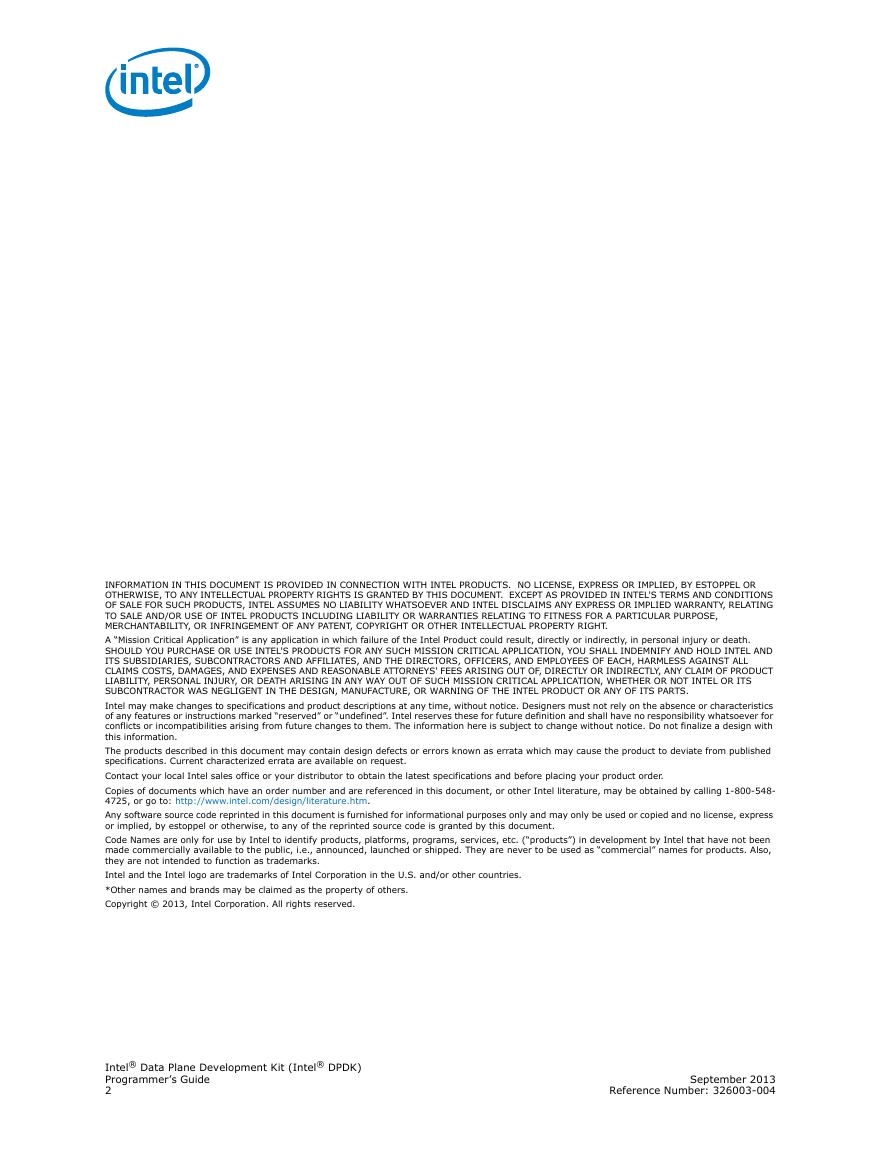
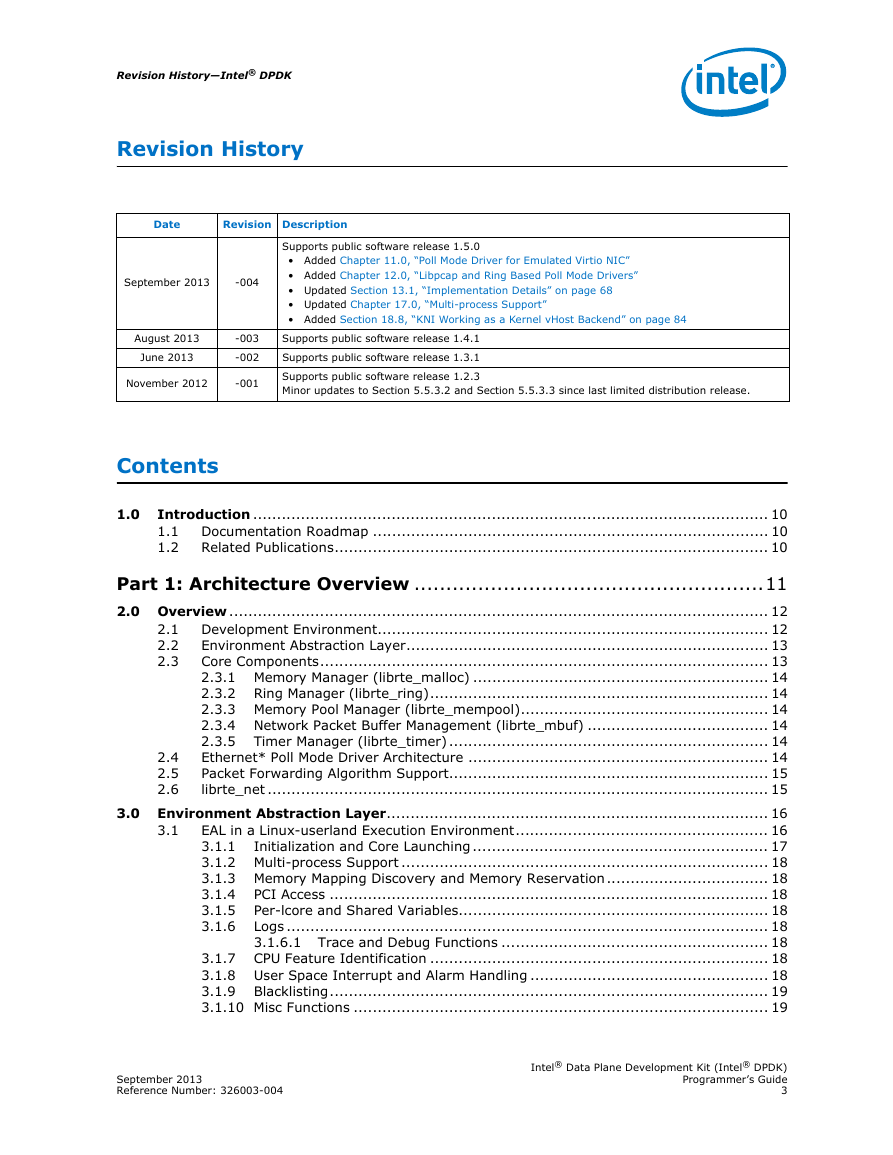
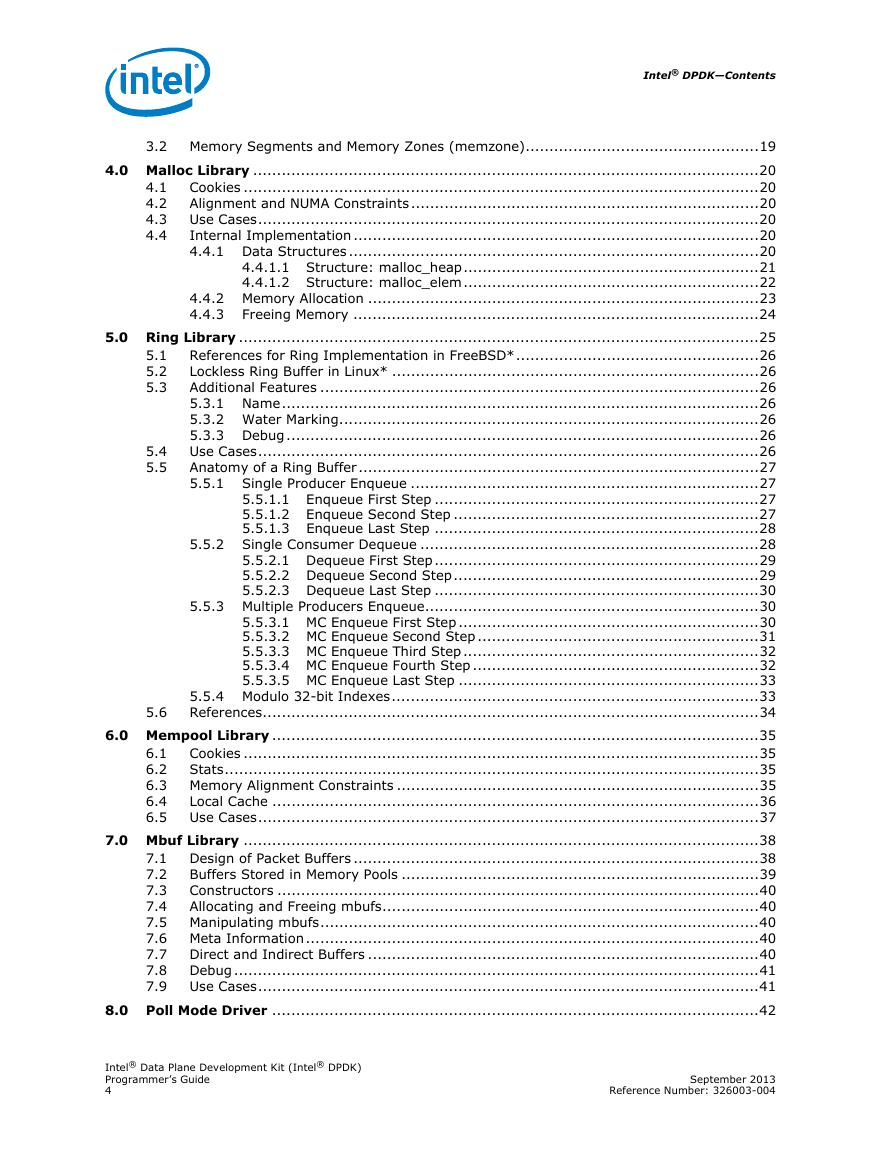

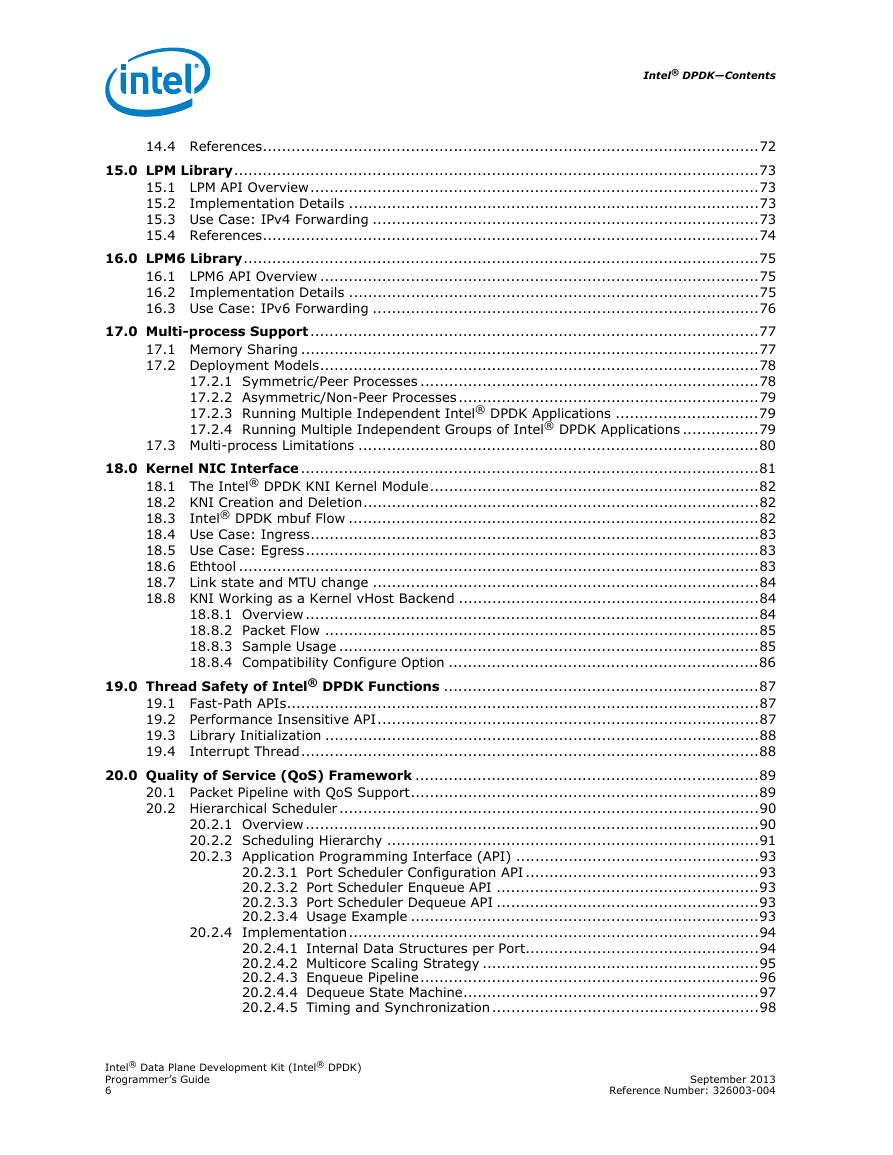

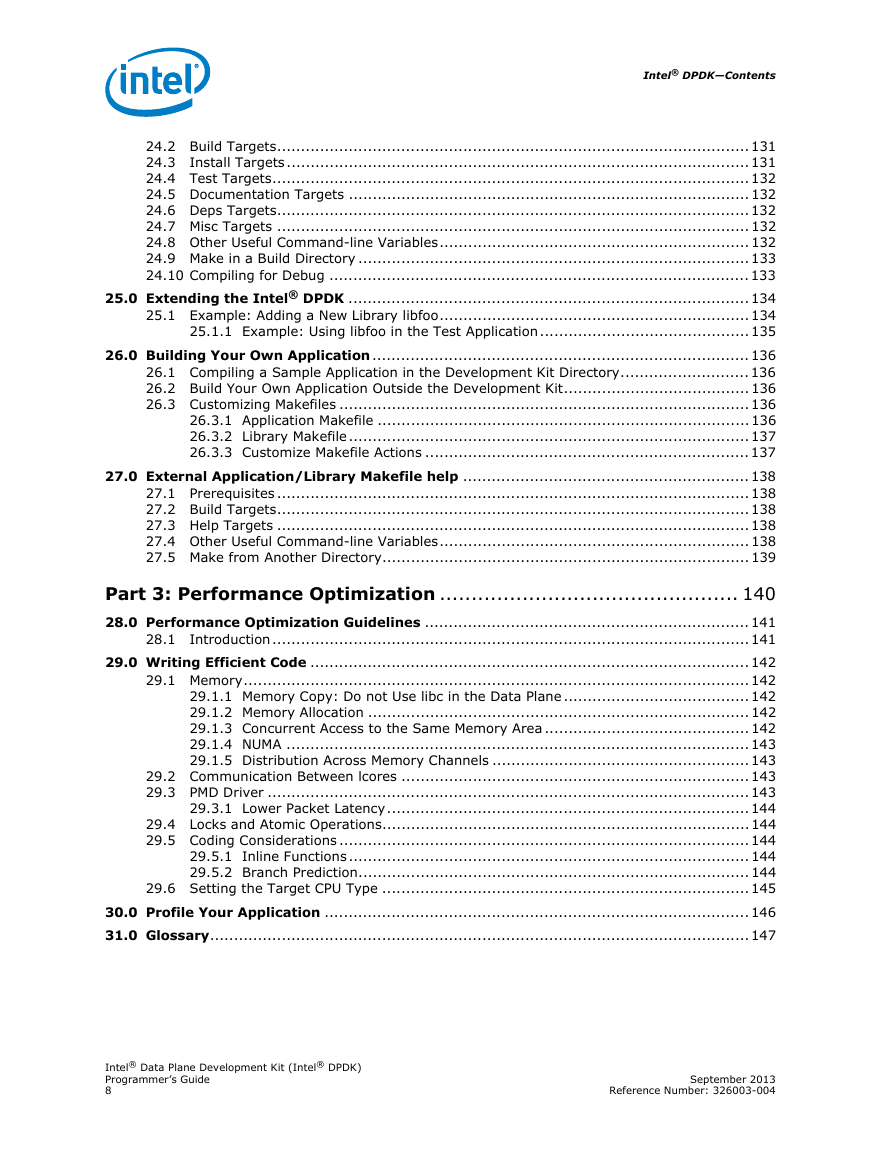








 2023年江西萍乡中考道德与法治真题及答案.doc
2023年江西萍乡中考道德与法治真题及答案.doc 2012年重庆南川中考生物真题及答案.doc
2012年重庆南川中考生物真题及答案.doc 2013年江西师范大学地理学综合及文艺理论基础考研真题.doc
2013年江西师范大学地理学综合及文艺理论基础考研真题.doc 2020年四川甘孜小升初语文真题及答案I卷.doc
2020年四川甘孜小升初语文真题及答案I卷.doc 2020年注册岩土工程师专业基础考试真题及答案.doc
2020年注册岩土工程师专业基础考试真题及答案.doc 2023-2024学年福建省厦门市九年级上学期数学月考试题及答案.doc
2023-2024学年福建省厦门市九年级上学期数学月考试题及答案.doc 2021-2022学年辽宁省沈阳市大东区九年级上学期语文期末试题及答案.doc
2021-2022学年辽宁省沈阳市大东区九年级上学期语文期末试题及答案.doc 2022-2023学年北京东城区初三第一学期物理期末试卷及答案.doc
2022-2023学年北京东城区初三第一学期物理期末试卷及答案.doc 2018上半年江西教师资格初中地理学科知识与教学能力真题及答案.doc
2018上半年江西教师资格初中地理学科知识与教学能力真题及答案.doc 2012年河北国家公务员申论考试真题及答案-省级.doc
2012年河北国家公务员申论考试真题及答案-省级.doc 2020-2021学年江苏省扬州市江都区邵樊片九年级上学期数学第一次质量检测试题及答案.doc
2020-2021学年江苏省扬州市江都区邵樊片九年级上学期数学第一次质量检测试题及答案.doc 2022下半年黑龙江教师资格证中学综合素质真题及答案.doc
2022下半年黑龙江教师资格证中学综合素质真题及答案.doc